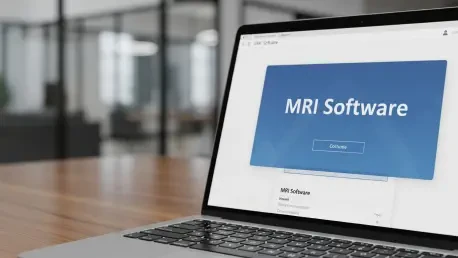In the fast-evolving world of property technology, one name stands out as a potential game-changer for investors seeking exposure to the real estate SaaS sector, and that name is MRI Software. Based in Cleveland with a global footprint, MRI Software has been making waves with speculation about an impending initial public offering (IPO). As a leader in property management and real estate software solutions, the company serves over 45,000 clients across 170 countries, positioning it as a heavyweight in the proptech arena. With private equity backers looking for an exit and market conditions ripe for SaaS listings, the anticipation around this IPO continues to build. This article delves into the critical details surrounding the potential listing, including the company’s background, financial drivers, and the factors that could influence stock performance. Additionally, it explores how traders can prepare to engage with this opportunity through tools like contracts for difference (CFDs), while highlighting the inherent risks of volatile IPO markets.
1. Understanding the Timeline and Expectations
The timeline for MRI Software’s IPO remains unconfirmed, creating a sense of anticipation among investors eager to tap into the real estate SaaS market. While no official filing has been made, industry sources suggest that the company is a strong candidate for a public listing within the next 12 to 24 months, potentially launching between now and 2026. Majority-owned by private equity firms TA Associates and GI Partners, with Harvest Partners also holding a stake, the company’s ownership structure points toward an IPO as a likely exit strategy. These firms typically seek liquidity after a period of value creation, and given MRI Software’s scale and global client base, a public offering appears to be the most logical path. A listing on Nasdaq is considered the frontrunner, though the NYSE remains a viable alternative, with valuations speculated to reach up to $10 billion if annual recurring revenue (ARR) growth and retention metrics impress.
Several factors underpin the timing of this potential IPO, each reflecting strategic and market-driven motives. The maturity of private equity ownership signals a need for liquidity, while MRI Software’s expansive reach—serving over 45,000 clients worldwide—would gain further credibility through a public float. Additionally, funds raised from an IPO could accelerate investments in cutting-edge areas like AI, ESG compliance, and predictive analytics, fueling further growth. The broader market appetite for scaled, profitable SaaS companies also supports this move, despite recent corrections in tech valuations. For investors, staying informed about filing updates and market sentiment will be crucial as the expected window approaches, ensuring they are positioned to act when concrete details emerge. The combination of strategic necessity and favorable market dynamics makes this a closely watched development in the proptech space.
2. Exploring MRI Software’s Background and Market Position
MRI Software, founded in 1971 and headquartered in the United States, has evolved from a basic accounting system for property managers into a global leader in real estate and property management software. The company’s comprehensive solutions span the entire property lifecycle, including tenant accounting, leasing, investment tracking, and facilities management. With a presence in over 170 countries and a client base exceeding 45,000, it caters to diverse stakeholders such as landlords, asset managers, corporate occupiers, and public housing bodies. Its global operations are supported by offices across the US, EMEA, and APAC, bolstered by an aggressive acquisition strategy that has expanded its footprint into markets like the UK, Australia, and South Africa. This extensive reach and diversified service offering position MRI Software as a standout in the proptech sector.
The company’s growth trajectory has been significantly shaped by over 50 acquisitions in the past decade, integrating firms like Castleton Technology and Housing Partners in the UK, and IPM Software in the US. These moves have not only broadened its client base but also deepened its expertise in verticals such as affordable housing and public sector services. For investors, a potential IPO represents a rare opportunity to access a scaled, independent global proptech platform, especially in a landscape where key competitors like Yardi and RealPage remain private, and others like AppFolio operate on a smaller scale. This unique positioning could make MRI Software a flagship listed entity in real estate SaaS, drawing significant attention when the public offering materializes.
3. Breaking Down the Revenue Model
MRI Software’s revenue model is heavily anchored in recurring income, a hallmark of successful SaaS businesses that appeals to investors seeking stability. The primary driver is SaaS subscriptions, with thousands of clients paying monthly or annual fees to access cloud-based platforms for property and investment management. Beyond subscriptions, professional services such as integration, training, and implementation provide additional revenue streams, enhancing customer retention despite lower margins compared to core SaaS income. Maintenance and support agreements further contribute to consistent cash flow, ensuring a reliable financial base. This multifaceted approach to revenue generation underscores the company’s ability to balance growth with financial predictability, a key consideration for potential shareholders.
Acquisitions also play a pivotal role in MRI Software’s financial strategy, bringing incremental revenue through expanded market reach and new verticals. Acquired companies have broadened the firm’s presence in areas like public housing and facilities management, as well as regional markets across the globe. This strategy not only diversifies income but also strengthens the company’s competitive edge by integrating complementary technologies and client bases. As the IPO looms, investors will likely scrutinize these revenue streams for signs of sustainable growth, particularly the balance between high-margin SaaS subscriptions and the steady contributions from services and acquisitions. Understanding these dynamics will be essential for assessing the stock’s long-term value proposition.
4. Analyzing Factors That Could Impact Stock Price
Post-IPO, MRI Software’s stock price will be influenced by a range of external and internal factors, starting with macroeconomic and sector-specific trends. Real estate market cycles directly affect technology adoption, with slowdowns potentially leading to budget cuts among property owners and managers. However, economic downturns can also spur investments in efficiency tools, creating a complex dynamic. Rising interest rates, inflation, and pressures on real estate valuations may pose challenges, while long-term drivers like digitalization, ESG requirements, and tenant experience enhancements offer positive momentum. These broader trends will shape investor sentiment and demand for proptech solutions, impacting how the market values the company after its public debut.
Internally, company fundamentals will be under intense scrutiny, with ARR growth, gross margins, and net retention rates serving as critical metrics. SaaS valuations often favor firms with retention rates above 100%, and MRI Software’s ability to upsell across its extensive product suite will be key. Competition from players like Yardi, AppFolio, and CoStar adds another layer of complexity, though MRI Software’s global reach and diverse client base across residential, commercial, and public sectors provide differentiation. Additionally, compliance with data privacy laws across 170 countries and governance transparency during the transition to public ownership will be vital. Valuation scenarios hinge on these factors, with strong financial performance potentially driving higher multiples, while weaker real estate cycles could temper expectations.
5. Navigating Trading Options with CFDs
Once MRI Software goes public, traders can speculate on its share price movements using contracts for difference (CFDs), a flexible tool that doesn’t require owning the underlying stock. To get started, select a reputable broker platform to access IPO stocks and fintech opportunities. Open an account by completing identity verification and suitability assessments, then fund it securely via bank transfer, card, or e-wallet. Monitor IPO developments closely, including filing documents, price ranges, and anchor investor demand, to gauge market sentiment. Finally, place trades by going long if a price rally is anticipated, or short if a decline is expected, while applying stop-loss tools to manage risk. This structured approach allows traders to engage with volatile IPO markets strategically.
It’s critical to acknowledge the risks associated with IPO trading, particularly in the early stages when price swings can be dramatic. CFDs enable speculation on these movements in either direction, but leverage amplifies both potential gains and losses. Past performance offers no guarantee of future results, and standard stop-losses are not always assured, with guaranteed options potentially incurring fees. For MRI Software, the combination of market volatility and sector-specific challenges necessitates robust risk management practices. Traders must remain vigilant, balancing the opportunities presented by a high-profile listing with the inherent uncertainties of early public trading.
6. Considering Alternative Proptech and SaaS Stocks
While awaiting MRI Software’s IPO, investors and traders can explore listed alternatives in the proptech and SaaS sectors for comparable exposure. AppFolio (APPF), a US-based SaaS provider, focuses on property managers, offering insights into smaller-scale real estate tech dynamics. CoStar Group (CSGP) stands out as a leader in real estate data and marketplaces, providing a different angle on the industry. Intuit (INTU), a SaaS giant in financial services, serves as a reference for subscription-based valuation models, while Salesforce (CRM) acts as a benchmark for enterprise SaaS multiples. Oracle (ORCL), with its enterprise software solutions, also intersects with real estate clients, rounding out a diverse set of proxies to consider in the interim.
These alternatives allow market participants to build familiarity with related sectors and valuation trends before MRI Software’s listing materializes. Each company offers unique strengths, from CoStar’s data dominance to Salesforce’s enterprise focus, providing a spectrum of investment or trading opportunities. By engaging with these stocks, traders can refine strategies and assess market sentiment toward SaaS and proptech themes. This preparation could prove invaluable when the anticipated IPO arrives, ensuring a deeper understanding of competitive landscapes and financial metrics that will influence performance in this niche but growing market segment.
7. Reflecting on Key Takeaways and Next Steps
Looking back, the potential IPO of MRI Software emerged as a noteworthy event for those invested in the proptech and real estate SaaS landscape. Discussions centered on the absence of a confirmed listing date, yet speculation pointed to a window within the next 12 to 24 months. Factors such as robust financial metrics, competitive positioning, and broader economic trends were identified as pivotal in shaping the stock’s trajectory post-launch. The company’s global presence and diversified revenue streams were highlighted as strengths that could attract significant investor interest, despite the challenges posed by market volatility and regulatory scrutiny.
Moving forward, attention should shift to actionable strategies for engaging with this opportunity once it materializes. Traders were advised to leverage CFDs to navigate price movements, ensuring strict risk management protocols were in place to mitigate the unpredictability of early trading. Keeping abreast of filing updates and market analyses remained essential for timing entry points effectively. Additionally, exploring listed proxies in the SaaS and proptech sectors offered a way to build expertise and refine approaches ahead of the event. Staying proactive and informed was deemed the best path to capitalizing on what promised to be a significant milestone in the industry.









